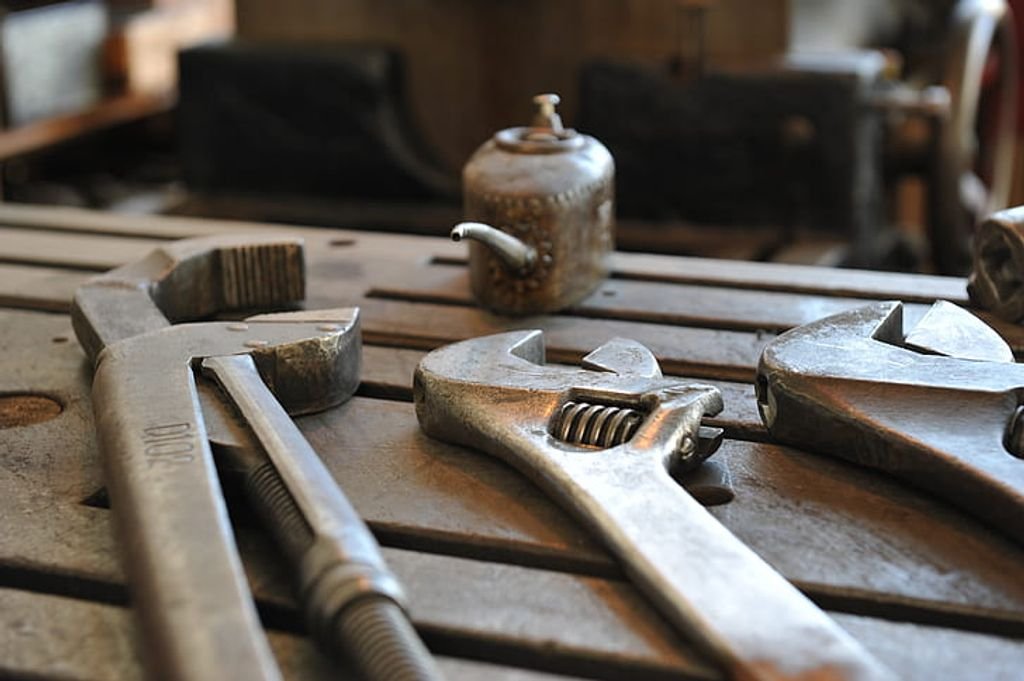Maintaining your car is essential to keep it running smoothly and avoid costly repairs. As a DIY enthusiast, having the right tools can make car maintenance tasks easier and more efficient. In this article, we will discuss the 10 must-have car maintenance tools that every DIY enthusiast should have in their toolbox.
Key Takeaways
- Oil filter wrench is necessary for changing the oil filter.
- A socket set is versatile and can be used for various tasks.
- Using a torque wrench is important to ensure proper tightening of bolts.
- Jack stands are essential for safely lifting and supporting the car.
- A multimeter is useful for testing electrical systems in the car.
Oil Filter Wrench
Types of Oil Filter Wrenches
When it comes to oil filter wrenches, there are several types available that cater to different needs. Here are some common types of oil filter wrenches:
-
Strap Wrench: This type of wrench features a flexible strap that wraps around the filter, providing a secure grip.
-
Claw Wrench: The claw wrench has teeth or claws that grip onto the filter, allowing for easy removal.
-
Cap Wrench: Cap wrenches have a socket-like design that fits over the end of the filter, providing a snug fit.
-
Chain Wrench: Chain wrenches have a chain that wraps around the filter, allowing for a strong grip.
Each type of oil filter wrench has its advantages and is suitable for different filter sizes and shapes. It’s important to choose the right type of wrench for your specific needs to ensure a successful filter change.
Remember to always consult your vehicle’s manual for the correct filter size and type before purchasing an oil filter wrench.
How to Choose the Right Oil Filter Wrench
When choosing the right oil filter wrench, there are a few factors to consider. First, you’ll want to determine the type of oil filter wrench that is compatible with your vehicle’s oil filter. There are different types of oil filter wrenches available, such as strap wrenches, socket wrenches, and claw wrenches. Each type has its own advantages and disadvantages, so it’s important to choose one that suits your needs.
Next, you’ll need to consider the size of the oil filter wrench. Oil filters come in different sizes, so it’s crucial to select a wrench that fits the specific size of your oil filter. Using the wrong size wrench can result in damage to the filter or the wrench itself.
Lastly, you should also take into account the quality and durability of the oil filter wrench. Investing in a high-quality wrench will ensure that it lasts longer and provides a secure grip on the oil filter, making the removal and installation process easier and more efficient.
To summarize, when choosing the right oil filter wrench, consider the type, size, and quality of the wrench to ensure a successful and hassle-free oil filter replacement.
Socket Set
Different Types of Sockets
When it comes to socket sets, there are several different types available to suit various needs. Here are some of the most common types:
- Standard Sockets: These are the most basic type of socket and are used for general purpose applications.
- Deep Sockets: These sockets have a longer length, allowing them to reach bolts in deeper recesses.
- Impact Sockets: Designed to withstand high torque and impact, these sockets are commonly used with power tools.
- Spark Plug Sockets: These sockets have a rubber insert to securely hold spark plugs during installation or removal.
It’s important to have a variety of socket types in your tool collection to ensure you have the right tool for the job. Whether you’re working on a simple repair or a complex project, having the appropriate socket can make the task much easier and more efficient.
Common Socket Sizes
When it comes to socket sets, it’s important to have a variety of sizes to tackle different tasks. Here are some common socket sizes that every DIY enthusiast should have in their toolbox:
- 1/4 inch
- 3/8 inch
- 1/2 inch
These sizes refer to the drive size of the socket, which corresponds to the size of the ratchet or breaker bar that fits into it. Each size has its own advantages and is suitable for specific applications. For example, the 1/4 inch socket is great for working on small fasteners, while the 1/2 inch socket is ideal for heavy-duty tasks.
Having a range of socket sizes ensures that you have the right tool for any job that comes your way. Whether you’re working on your car, motorcycle, or other machinery, having the right socket size can make all the difference in getting the job done efficiently and effectively.
Remember to always use the appropriate socket size for the task at hand and avoid using sockets that are too small or too large, as this can lead to stripped or damaged fasteners.
How to Use a Socket Set
Using a socket set is a fundamental skill for any DIY enthusiast. Here are some tips to help you make the most of your socket set:
-
Familiarize yourself with the different types of sockets available. Socket sets typically include a variety of socket sizes and types, such as standard, deep, and impact sockets.
-
Before using a socket, ensure that it is the correct size for the bolt or nut you are working with. Using the wrong size socket can result in stripped bolts or rounded nuts.
-
When using a socket, make sure it is securely attached to the ratchet or handle. A loose socket can slip off and cause injury.
-
Apply steady and even pressure when turning the socket. Avoid using excessive force, as this can damage the socket or the fastener.
-
After using a socket set, clean and inspect the sockets for any signs of wear or damage. Replace any damaged sockets to ensure safe and effective use in the future.
Tip: Keep your socket set organized by using a socket rail or tray. This will make it easier to find the right socket when you need it.
Torque Wrench
Importance of Using a Torque Wrench
Using a torque wrench is crucial for ensuring the proper tightening of bolts and nuts in your car. Over-tightening can lead to stripped threads or even damage to the components, while under-tightening can result in loose connections that may lead to accidents or component failure.
To emphasize the importance of using a torque wrench, here are a few key points:
- Accurate Torque: A torque wrench allows you to apply the correct amount of force to achieve the desired torque specification. This is especially important for critical components like engine parts, suspension components, and wheel lug nuts.
- Consistency: Using a torque wrench ensures that the same amount of force is applied to each bolt or nut, providing consistency in the tightness of the connections.
- Prevent Damage: By using a torque wrench, you can prevent damage to the components and avoid costly repairs.
Remember, always follow the manufacturer’s recommended torque specifications for each application.
Tip: When using a torque wrench, make sure to set it to the correct torque value and use the appropriate socket or bit for the fastener.
How to Properly Use a Torque Wrench
Using a torque wrench correctly is crucial to ensure accurate and consistent tightening of bolts and nuts. Here are some important tips to follow:
-
Set the torque value: Before using the torque wrench, make sure to set the desired torque value. This can usually be done by adjusting the handle or using a digital display.
-
Apply steady pressure: When using the torque wrench, apply steady and even pressure to achieve the desired torque. Avoid jerking or sudden movements that can affect the accuracy of the tightening.
-
Use the correct socket: Always use the correct size socket that matches the bolt or nut you are tightening. Using the wrong size socket can lead to improper torque application and potential damage.
-
Follow the manufacturer’s instructions: Different torque wrenches may have specific instructions or limitations. It is important to read and follow the manufacturer’s guidelines for proper use.
-
Perform regular calibration: To ensure the accuracy of the torque wrench, it is recommended to have it calibrated regularly by a professional.
Remember, using a torque wrench correctly is essential for maintaining the integrity and safety of your vehicle’s components.
Jack Stands
Why Jack Stands are Essential
Using jack stands is crucial for ensuring the safety of both the DIY enthusiast and the vehicle. Accidents can happen if a car is not properly supported while working underneath it. Jack stands provide a stable and secure platform, preventing the car from falling or shifting unexpectedly.
Here are a few key reasons why jack stands are essential:
- Safety: Jack stands offer a reliable support system that can handle the weight of the vehicle, reducing the risk of accidents.
- Stability: Unlike hydraulic jacks, jack stands provide a stable base that keeps the car in place, even when force is applied.
- Accessibility: Jack stands allow for easier access to the underside of the vehicle, making it easier to perform maintenance and repairs.
Tip: Always use jack stands on a flat and level surface, and make sure to follow the manufacturer’s instructions for proper placement and usage.
Remember, safety should always be the top priority when working on a car. Using jack stands is a simple yet effective way to ensure a secure and stable working environment.
How to Safely Use Jack Stands
Using jack stands is crucial for safely working under a car. Here are some important tips to follow:
- Always use jack stands on a level and stable surface.
- Place the jack stands on the designated lifting points of the vehicle.
- Make sure the jack stands are properly positioned and securely locked in place.
- Double-check that the vehicle is stable and secure before getting underneath.
Remember, never rely solely on a hydraulic jack to support the weight of the vehicle. Jack stands provide an extra layer of safety and stability.
Tip: It’s a good practice to give the vehicle a gentle shake before getting underneath to ensure it is properly supported by the jack stands.
Stay safe and take the necessary precautions when using jack stands to avoid accidents and injuries.
Multimeter
Testing Electrical Systems with a Multimeter
When testing electrical systems with a multimeter, it is important to follow the proper procedures to ensure accurate results. Here are some key points to keep in mind:
- Start by setting the multimeter to the appropriate voltage range for the system you are testing.
- Carefully connect the multimeter probes to the circuit or component you are testing, making sure to observe polarity if applicable.
- Take note of the readings displayed on the multimeter. If the readings are within the expected range, it indicates that the electrical system is functioning properly.
Tip: When testing a circuit, it is recommended to disconnect the power source to avoid any potential damage to the multimeter or the circuit itself.
Remember to always refer to the manufacturer’s instructions and safety guidelines when using a multimeter.
How to Choose the Right Multimeter
When choosing a multimeter, it is important to consider a few key factors to ensure you get the right tool for your needs.
Accuracy: One of the most important factors to consider is the accuracy of the multimeter. Look for a model that has a high level of accuracy to ensure precise measurements.
Functions: Different multimeters offer different functions. Consider what specific functions you need for your car maintenance tasks, such as voltage measurement, continuity testing, or diode testing.
Safety Features: Safety should always be a priority when working with electrical systems. Look for a multimeter that has safety features like overload protection and non-contact voltage detection.
Durability: Car maintenance can be tough on tools, so it’s important to choose a multimeter that is durable and can withstand the demands of the job.
To help you make an informed decision, here is a table comparing some popular multimeters:
| Model | Accuracy | Functions | Safety Features | Durability |
|---|---|---|---|---|
| A | High | Voltage, Continuity, Diode | Overload protection, Non-contact voltage detection | Durable |
| B | Medium | Voltage, Resistance, Capacitance | Overload protection | Moderate |
| C | Low | Voltage, Current, Resistance | – | Fragile |
Remember to choose a multimeter that suits your specific needs and budget. It’s an essential tool for any DIY car enthusiast.
Brake Bleeder Kit
Importance of Bleeding Brakes
Bleeding the brakes is a crucial maintenance task that ensures the proper functioning of your car’s braking system. It involves removing air bubbles from the brake lines, which can cause a spongy or unresponsive brake pedal. Properly bleeding the brakes is essential for maintaining optimal braking performance and ensuring your safety on the road.
When air enters the brake lines, it can compress, resulting in a loss of hydraulic pressure. This can lead to a decrease in braking power and potentially dangerous situations. Bleeding the brakes removes any trapped air, allowing the brake fluid to flow smoothly and effectively transmit the force from the brake pedal to the brake calipers or drums.
To bleed the brakes, you will need a few tools and materials:
- Brake bleeder kit
- Brake fluid
- Wrench or socket set
Here are the steps to bleed your brakes:
- Start with the brake furthest from the master cylinder.
- Attach the brake bleeder kit to the bleeder valve.
- Open the bleeder valve and have a helper press the brake pedal.
- Close the bleeder valve and repeat the process for each brake.
Remember to always consult your vehicle’s manual for specific instructions and safety precautions when bleeding the brakes.
Tip: It’s important to use the correct type of brake fluid specified by your vehicle’s manufacturer. Using the wrong type of fluid can damage the braking system and compromise your safety.
How to Use a Brake Bleeder Kit
To use a brake bleeder kit, follow these steps:
- Start by locating the bleeder valve on the brake caliper or wheel cylinder.
- Attach the clear plastic hose from the bleeder kit to the bleeder valve.
- Place the other end of the hose into a container to catch the brake fluid.
- Open the bleeder valve by turning it counterclockwise.
- Have a helper press the brake pedal slowly and hold it down.
- As the brake pedal is pressed, air bubbles and old brake fluid will be forced out through the hose.
- Close the bleeder valve by turning it clockwise.
- Repeat the process for each brake caliper or wheel cylinder.
Note: It is important to use caution when working with brake fluid as it can be corrosive. Always wear protective gloves and eyewear. Additionally, make sure to properly dispose of the old brake fluid according to local regulations.
OBD2 Scanner
Understanding OBD2 Codes
When it comes to diagnosing car issues, understanding OBD2 codes is crucial. OBD2 codes, also known as On-Board Diagnostic codes, are alphanumeric codes that indicate specific problems in a vehicle’s systems. These codes are generated by the car’s onboard computer and can be read using an OBD2 scanner.
Here are a few key points to know about OBD2 codes:
- OBD2 codes are standardized across all vehicles manufactured after 1996.
- Each code consists of a letter followed by four numbers.
- The letter indicates the system or component that is affected, while the numbers provide more specific information about the issue.
Using an OBD2 scanner can help you identify the cause of a check engine light or other warning indicators. By connecting the scanner to the car’s OBD2 port, you can retrieve the codes and then look up their meanings in a code database or online resource.
Tip: It’s important to note that OBD2 codes only provide a starting point for diagnosis. They indicate the general area of the problem but may not pinpoint the exact issue. Professional diagnosis may be required for a more accurate assessment.
If you’re a DIY enthusiast, having an OBD2 scanner in your toolkit can be incredibly useful. It allows you to gather valuable information about your car’s health and potentially save on diagnostic fees at the mechanic’s shop.
How to Use an OBD2 Scanner
Using an OBD2 scanner is a straightforward process that can help diagnose and troubleshoot issues with your car’s onboard computer system. Here are the steps to follow:
-
Connect the scanner: Start by locating the OBD2 port in your vehicle, which is usually found under the dashboard. Plug the scanner into the port.
-
Turn on the ignition: Turn the ignition key to the ‘on’ position without starting the engine. This will power up the scanner and allow it to communicate with the car’s computer.
-
Navigate the menu: Use the buttons or touchscreen on the scanner to navigate through the menu options. Select the ‘diagnostic’ or ‘scan’ function.
-
Scan for codes: Once in the diagnostic mode, the scanner will start scanning the car’s computer for trouble codes. These codes indicate specific issues with various systems in the vehicle.
-
Read and interpret codes: The scanner will display the trouble codes on its screen. Refer to the scanner’s manual or an online database to interpret the codes and understand the underlying problem.
-
Clear codes (optional): If you have fixed the issue or want to clear the codes for testing purposes, you can use the scanner to clear the trouble codes from the car’s computer.
Remember to consult a professional mechanic or refer to the vehicle’s service manual for further guidance if needed.
Battery Charger
Types of Battery Chargers
When it comes to battery chargers, there are several types available in the market. Each type has its own advantages and disadvantages. Here are some of the common types of battery chargers:
-
Trickle Chargers: These chargers provide a low, constant charge to the battery and are ideal for maintaining the charge of a battery over a long period of time.
-
Smart Chargers: Smart chargers are designed to automatically adjust the charging rate based on the battery’s condition. They are efficient and can prevent overcharging.
-
Float Chargers: Float chargers are similar to trickle chargers, but they provide an even lower charge to the battery. They are often used for long-term storage of batteries.
-
Fast Chargers: As the name suggests, fast chargers can quickly charge a battery. However, they may not be suitable for all types of batteries as they can cause overheating.
It is important to choose the right type of battery charger based on your specific needs and the type of battery you have. Make sure to read the manufacturer’s instructions before using a battery charger.
How to Safely Charge a Car Battery
To safely charge a car battery, follow these steps:
-
Ensure Safety: Before starting, make sure to wear protective gloves and safety glasses to protect yourself from any potential hazards.
-
Prepare the Battery: Locate the car battery and ensure that the ignition is turned off. Remove any covers or terminals that may be obstructing access to the battery.
-
Connect the Charger: Connect the positive (red) charger clamp to the positive terminal of the battery and the negative (black) charger clamp to the negative terminal. Make sure the clamps are securely attached.
-
Set the Charger: Set the charger to the appropriate voltage and charging rate as recommended by the manufacturer. Refer to the charger’s manual for specific instructions.
-
Start Charging: Once the charger is properly set up, plug it into a power source and turn it on. The charger will begin charging the battery. Monitor the charging process and ensure that it does not overcharge.
Tip: It is important to follow the manufacturer’s instructions and safety guidelines when charging a car battery to avoid any accidents or damage to the battery or vehicle.
-
Disconnect the Charger: Once the battery is fully charged, turn off the charger and unplug it from the power source. Disconnect the charger clamps from the battery terminals, starting with the negative (black) clamp first.
-
Reinstall Covers and Terminals: After disconnecting the charger, reattach any covers or terminals that were removed earlier. Ensure they are securely fastened.
Remember to always exercise caution and follow proper safety procedures when working with car batteries.
Conclusion
In conclusion, having the right car maintenance tools is essential for DIY enthusiasts. These tools not only help you save money on repairs but also empower you to take control of your vehicle’s maintenance. From a socket set for loosening and tightening bolts to a multimeter for diagnosing electrical issues, each tool plays a crucial role in keeping your car in top shape. So, invest in these must-have tools and enjoy the satisfaction of maintaining your car like a pro.
Frequently Asked Questions
What is an oil filter wrench?
An oil filter wrench is a tool used to remove and install oil filters in vehicles. It provides a secure grip on the filter, allowing for easy removal and tightening.
How do I choose the right oil filter wrench?
When choosing an oil filter wrench, consider the size and type of filter you will be working with. Make sure the wrench is compatible with the filter size and has a design that provides a secure grip.
What is a socket set?
A socket set is a collection of different-sized sockets and accessories used for loosening and tightening nuts and bolts. It typically includes a ratchet handle and various socket sizes.
How do I use a socket set?
To use a socket set, select the appropriate socket size for the nut or bolt you need to work on. Attach the socket to the ratchet handle and turn it in the desired direction to loosen or tighten the fastener.
Why is a torque wrench important?
A torque wrench is important for ensuring that fasteners are tightened to the correct specifications. Over-tightening or under-tightening can lead to damage or failure of the fastener or the component it is securing.
How do I properly use a torque wrench?
To properly use a torque wrench, set it to the desired torque value using the adjustable scale. Attach the appropriate socket or wrench to the torque wrench and apply force until the wrench clicks or signals that the desired torque has been reached.





